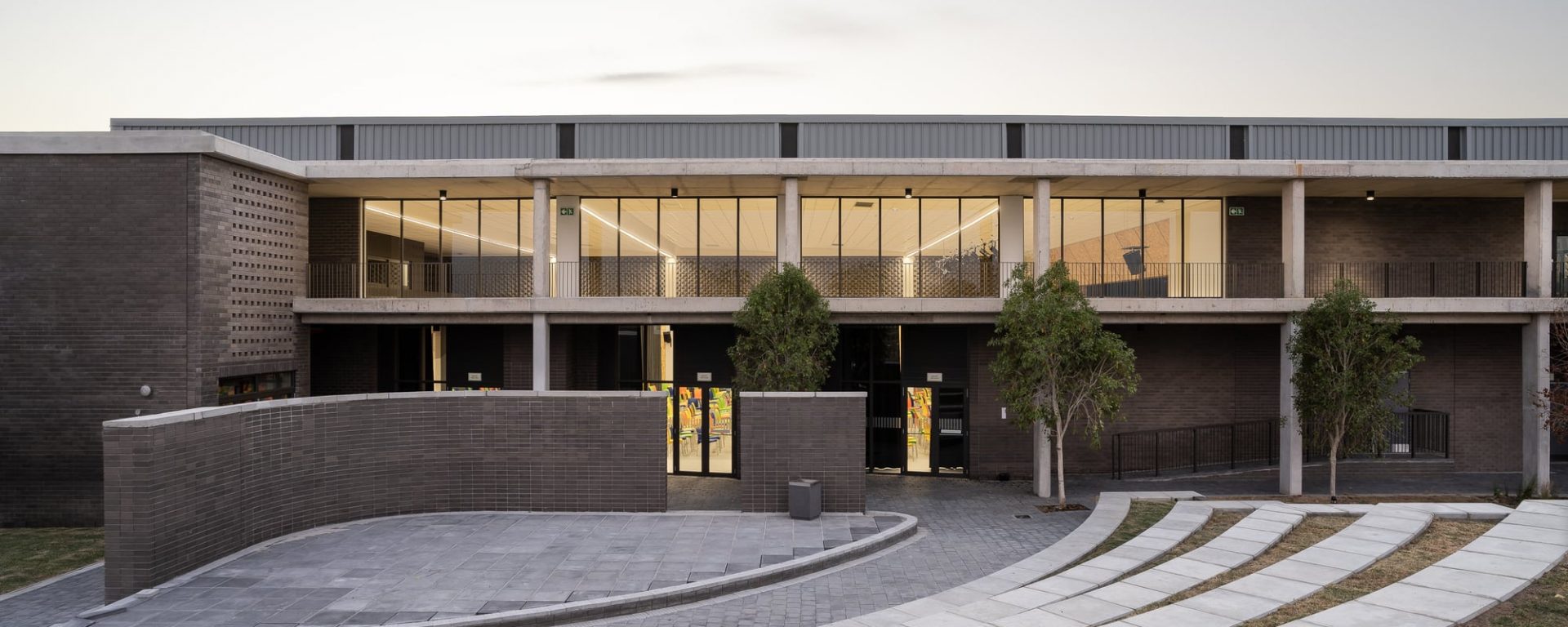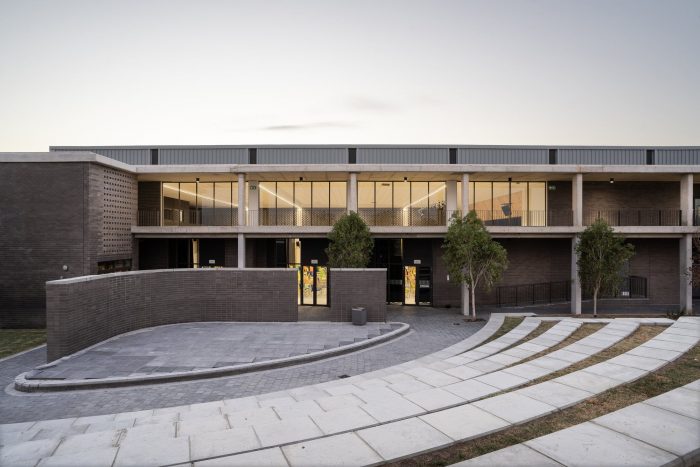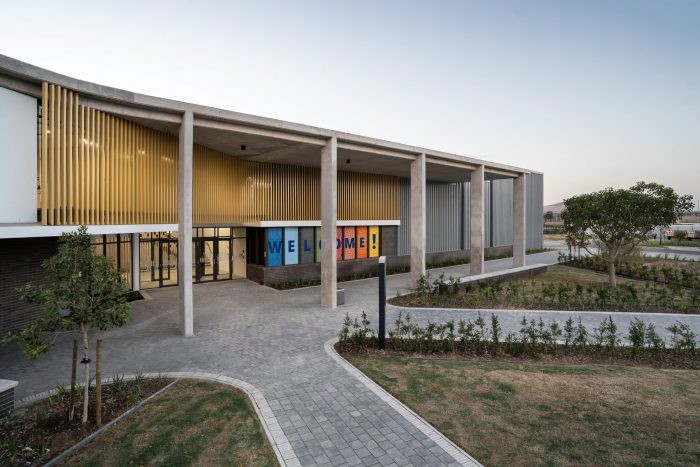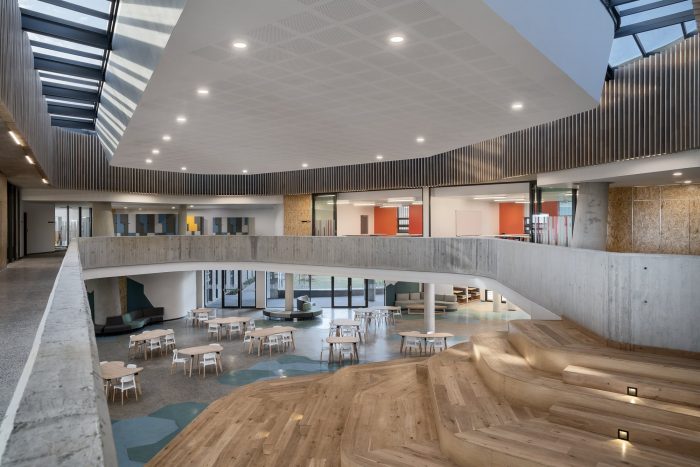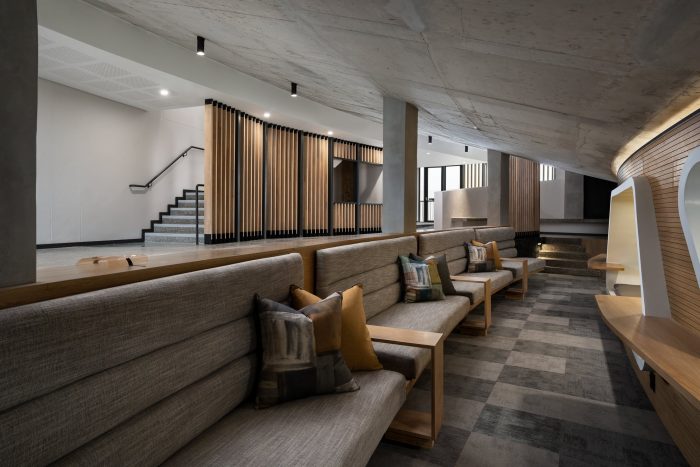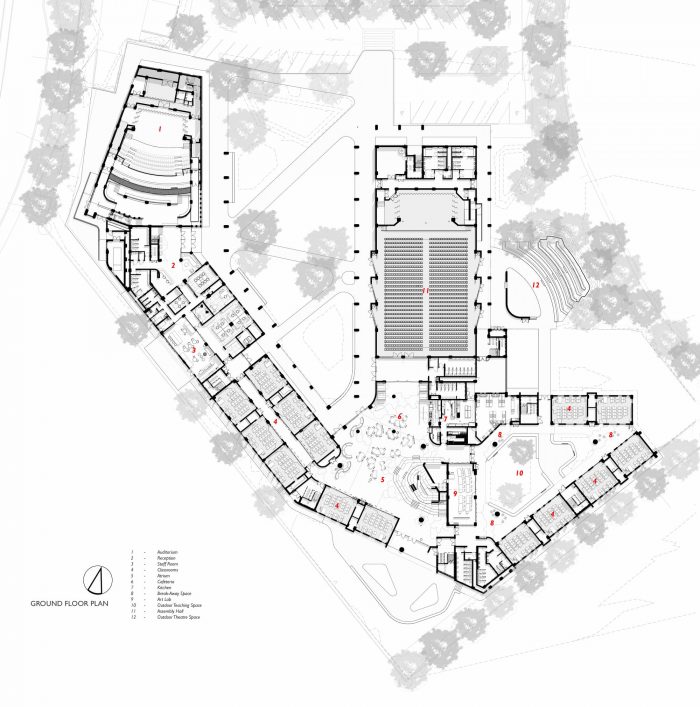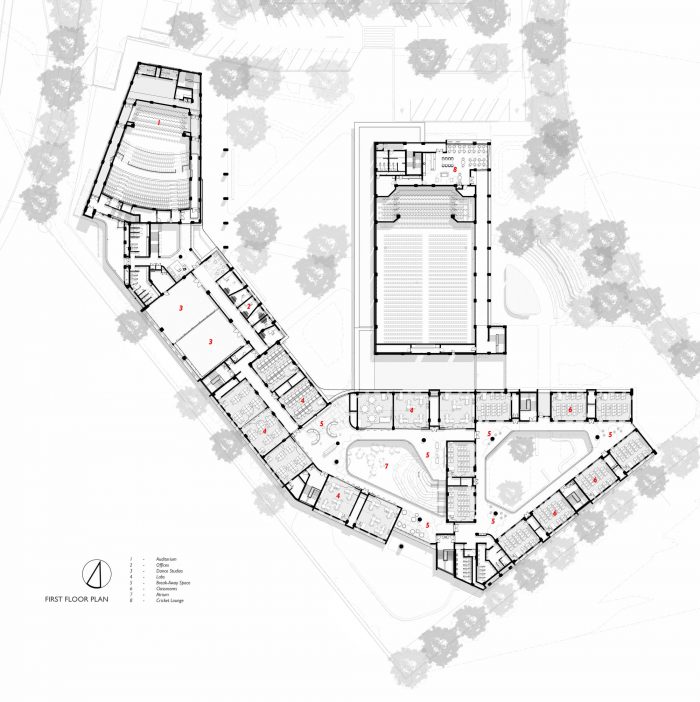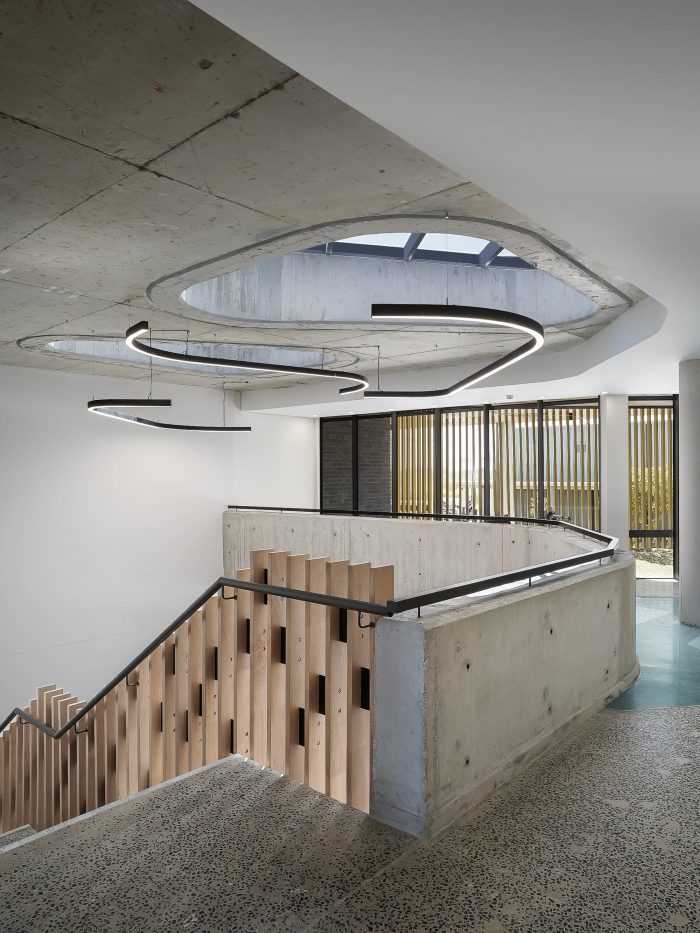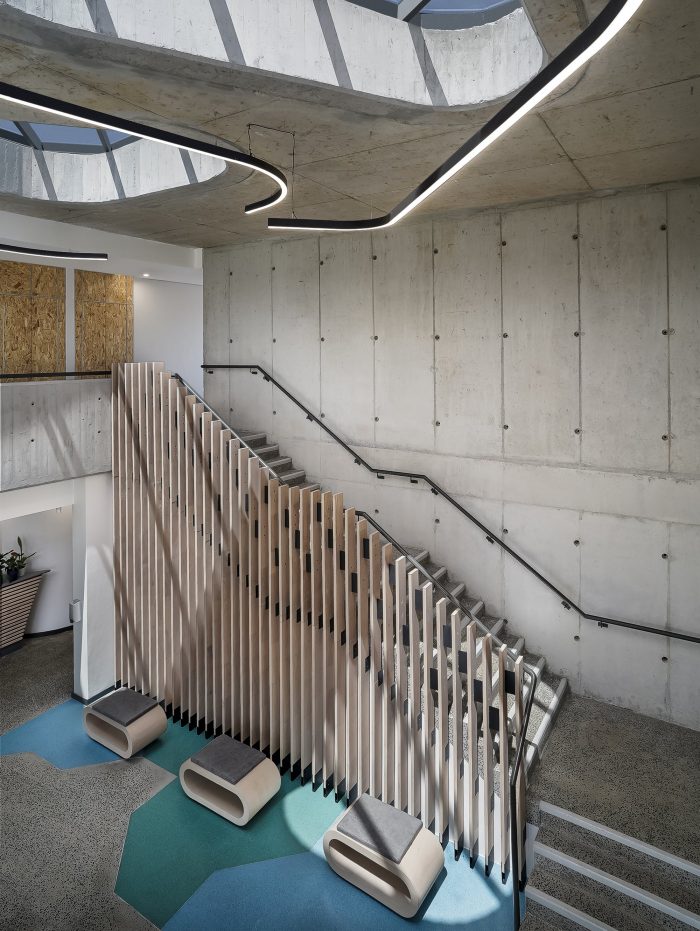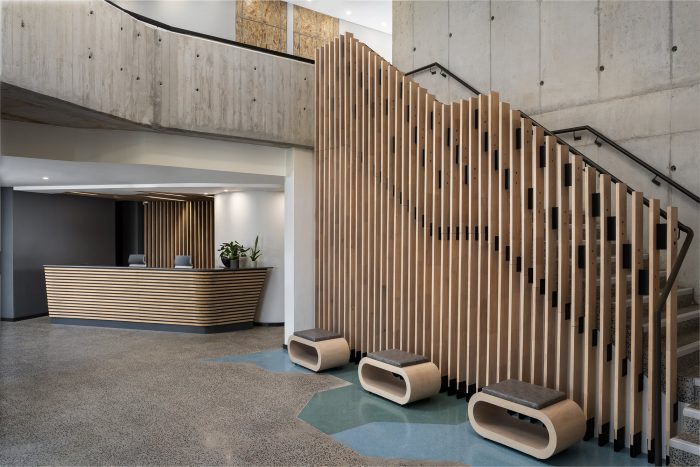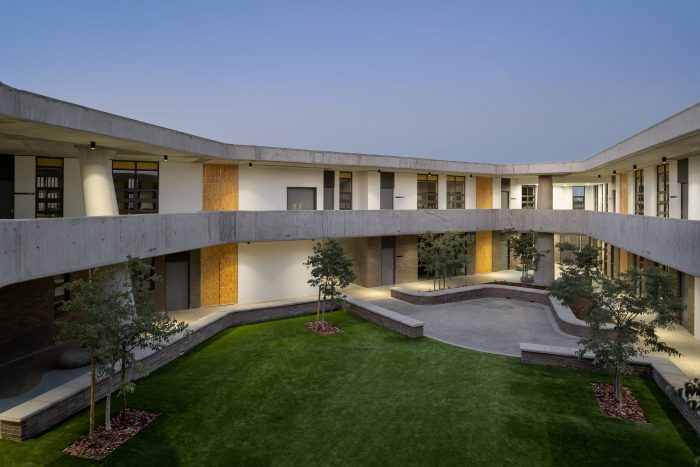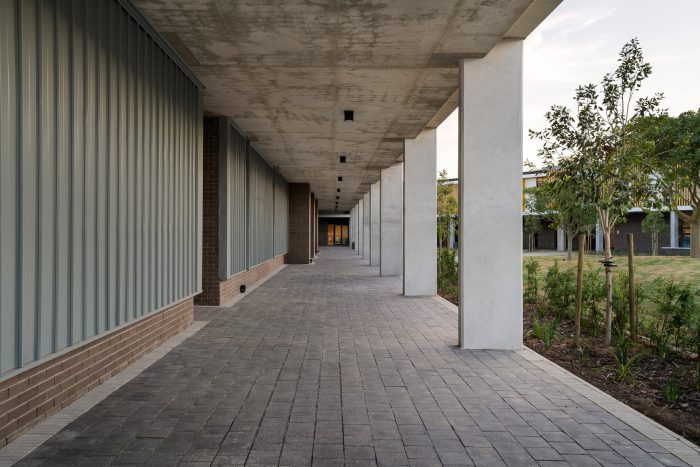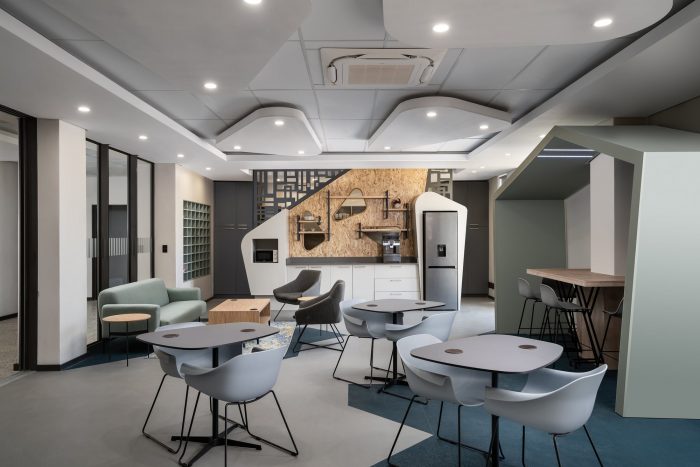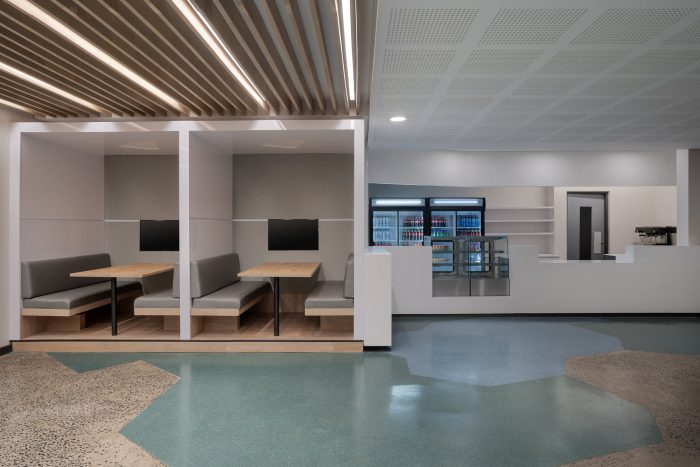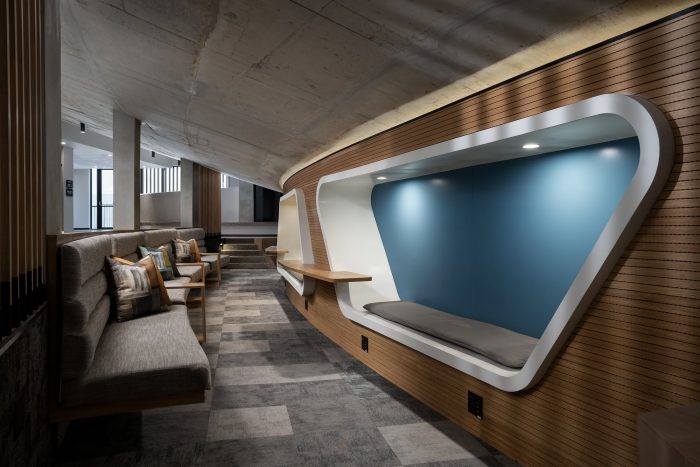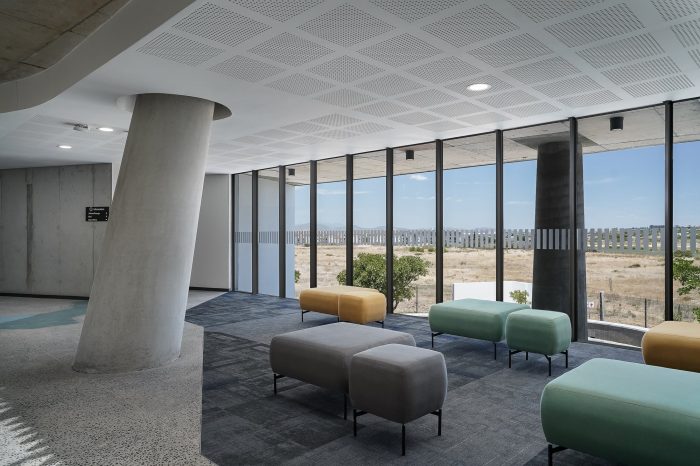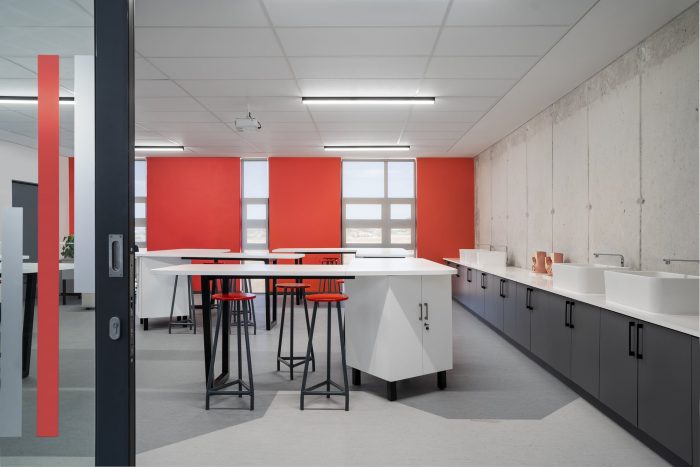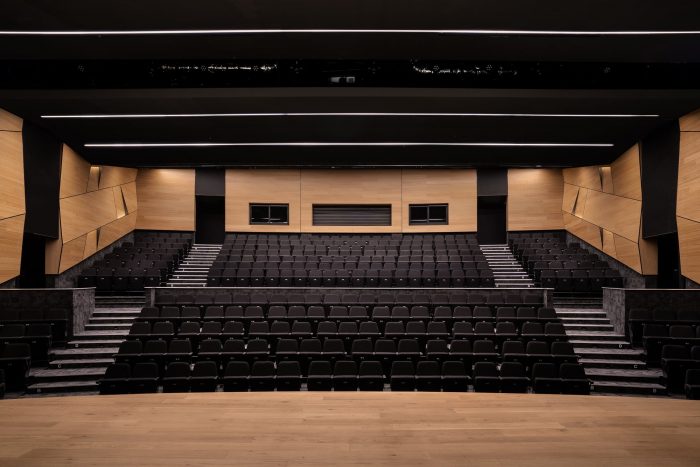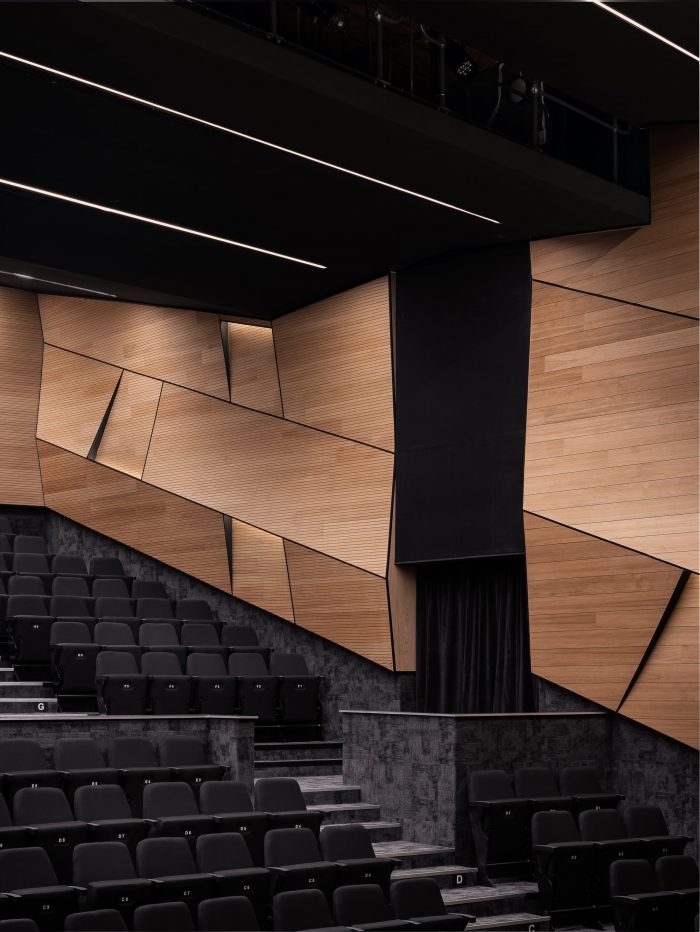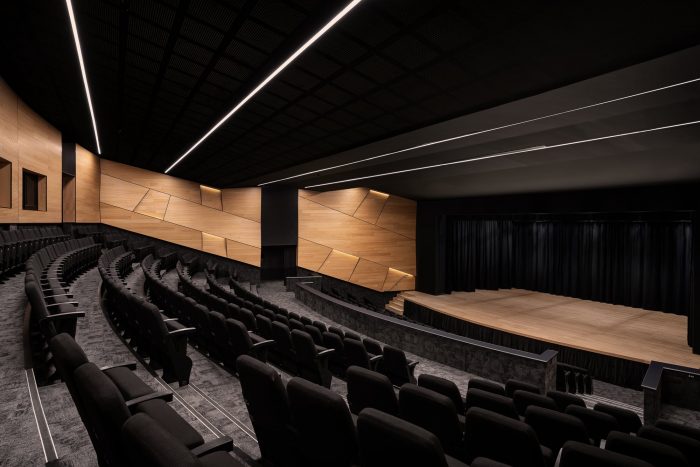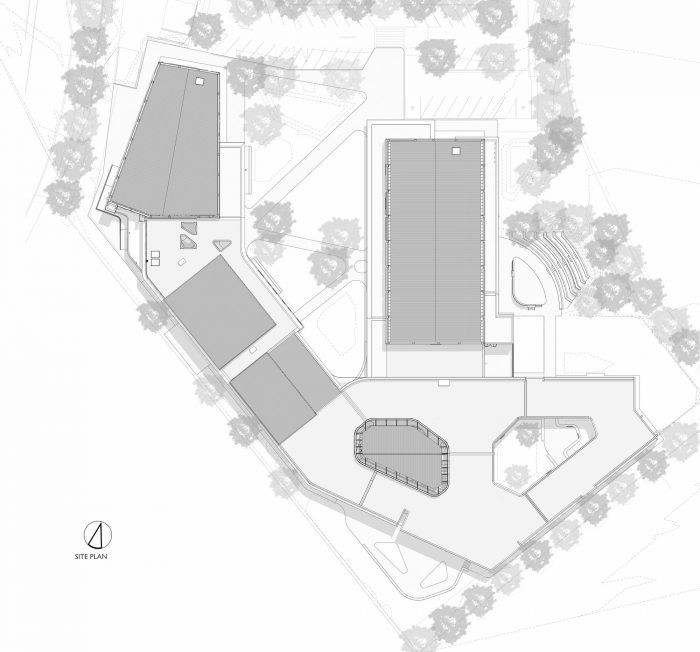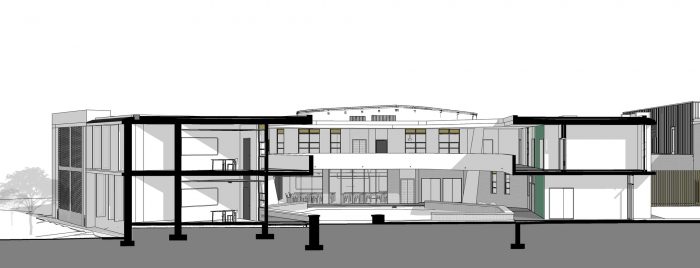该项目位于西开普省德班维尔的东北部,是Phesantekraal地区大型城市规划的一部分。设计大纲要求建立一所高质量的创新学校,并配备一系列文化和体育设施。重要的是,设计过程不是孤立于一个作者的。该方案是通过与学生、教师和其他顾问的合作参与而形成的。灵感来自于周围的景观和远处的山脉,油菜花田的颜色,以及场地内和周围现有结构的物质性。该设计在形式、质地和规模上散发着令人兴奋的气息。
Located to the northeast of Durbanville in the Western Cape, the site forms part of the larger urban plan for the Phesantekraal area. The brief called for a high-quality innovative school with a range of cultural and sports facilities. It was important that the design process was not isolated to a single author. The scheme came together through a collaborative engagement with learners, teachers, and other consultants. Inspiration was drawn from the surrounding landscape and the mountains in the distance, the color of the canola fields, and the materiality of existing structures located on and around the site. The design emits an exciting take on form, texture, and scale.
通过互动实现的学习是儿童发展的基础。这就是 “第三教师 “的精髓。它的原则可以归纳为以下几点。首先,与生活中的成人(父母和老师)互动,其次是与同伴互动,第三是通过与周围环境互动–学习者成熟的物理空间成为第三位老师。设计的目的是在布局、空间质量和装饰上把握和促进 “第三教师 “的价值,以创造一个积极的、刺激性的教育环境。
Learning achieved through interactions is the basis of how a child develops. This is the essence of The Third Teacher. Its principles can be summarised as follows: Firstly, interactions with the adults in their lives (parents and teachers), secondly with peers, and thirdly through interaction with their surrounding environment – the physical space in which learners mature becomes The Third Teacher. The design aims to capture and promote the value of The Third Teacher in its layout, spatial qualities and finishes to create a positive, stimulating educational environment.
U形的建筑占地面积框住了场地的南角,形成了一个由两侧的礼堂和大厅界定的前院。当学习者和参观者进入时,它 “拥抱 “着他们,同时也作为一个保护性的缓冲区,避免了外界的影响。与主入口的直接视觉连接使用户更容易找到方向。传统的 “学校类型 “包括由四面墙框住的教室,它受到了空间之间持续互动概念的挑战。教室变得具有渗透性和适应性,其家具,如可组合的桌子,专门为每个空间的混合和灵活使用而设计。在这个充满活力的中庭学习空间中,通过并列的斜柱和颜色强调了多样性,在一个集体和安全的环境中拥抱差异和独特性。
The U-shaped building footprint frames the southern corner of the site, which formulates a forecourt defined by the auditorium and hall on either side. It ‘embraces’ the learners and visitors as they enter, while also acting as a protective buffer from the elements. A direct visual connection to the main entrance makes wayfinding easier for users. The conventional ‘school typology’ consisting of classrooms that are framed by four walls was challenged with the concept of constant interaction between spaces. The classes become permeable and adaptive with furniture, such as combinable tables, designed specifically for the hybrid and flexible use of each space. Diversity is emphasized through juxtaposed slanted columns and colors in this dynamic atrium learning space, embracing difference and uniqueness in a collective and safe environment.
通常情况下,教室是包容性的和私人的,大厅和通道是半私人的,而操场是一个公共空间。现在,一间艺术教室通向一个中庭,可以变成一个画廊或展览区,也与食堂共享空间。食堂有一个实用的厨房,被招待所的学习者用于消费研究。消费者研究教室也与食堂相连。这种类型的设计提供了灵活性和混合使用,对于一个总是适应未来需求的学校来说是至关重要的。
Usually, the classroom is inclusive and private, the hall and passages are semi-private, and the playground is a public space. Now, an art classroom opens into an atrium that can be turned into a gallery or exhibition area, also sharing space with the cafeteria. The cafeteria has a practical kitchen which is used for consumer studies by the hospitality learners. The consumer studies classroom is linked to the cafeteria as well. This type of design provides flexibility and hybrid use, essential for a school that will always be adapting to future needs.
花纹砖墙在入口处作为一种导向方法,同时有助于建筑的美学。礼堂用金属板包覆,在主入口处形成一个突出的节点。混凝土屋面将项目组成部分(礼堂、教室空间和大厅)连接起来。这种饰面被拉到室内,并与天然木材元素的温暖相得益彰。总的来说,学校通过其可持续发展的考虑和非风格化的建筑对场地做出了回应。最终,该建筑的成功有赖于其用户的成功融入,从传统的学习空间转变为灵活的互动空间。
Patterned brickwork acts as a wayfinding method at entrances while contributing to the aesthetics of the building. The auditorium is clad in sheet metal which forms a prominent node at the main entrance. Off-shutter concrete roofs link the program components (auditorium, classroom spaces, and hall). This finish is pulled through to the interiors and complimented with the warmth of natural wood elements. Overall, the school responds to the site through its sustainability considerations and non-stylized architecture. Ultimately, the building’s success relies on the successful incorporation of its users, shifting from conventional to flexible and interactive learning spaces.










Architects: BPAS Architects
Area : 8865 m²
Year : 2022
Photographs :Burger Engelbrecht
Manufacturers : Geberit, Corobrik, Flowcrete, Polyflor, Rako, Regent, Saint-Gobain, dormakaba, African Hardwood, C.E.L, Catermarket, Cobra, Façade Projects, GP KONING, GRIT procurement, Go Green, Harris Electrical, Isoboard, Lecico, OWA
Lead Architects : Landseer Collen
Structural Engineering : KLS Consulting Engineers
Electrical Engineering : KLS Consulting Engineers
Civil Engineering : KLS Consulting Engineers
Quantity Surveyor : Calcoli
Acoustic Engineering : Mackenzie-Hoy
Interior Design : B-Sense, ORC
Landscape Architecture : CNdV Landscape Architects
Main Contractor : MNK Projects
Project Architects : Theo Gutter
Implementation Team Members : Petré Bester, Charl van der Westhuizen, Cuan Stephens
Audio Visual Consultant : PJK
City : Cape Town
Country : South Africa

